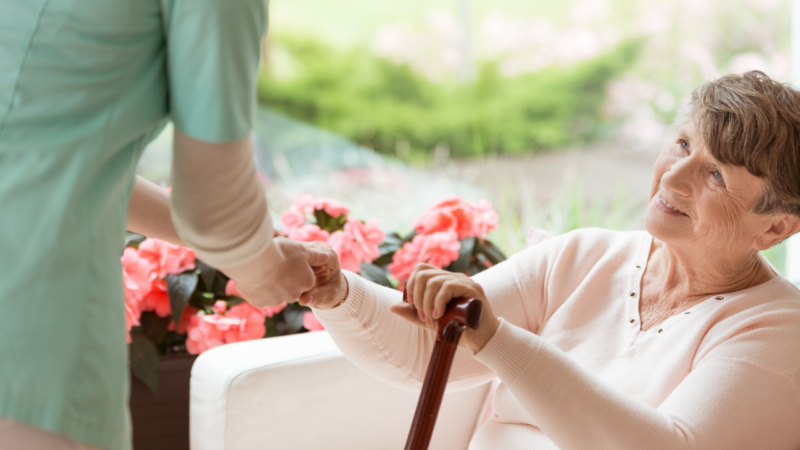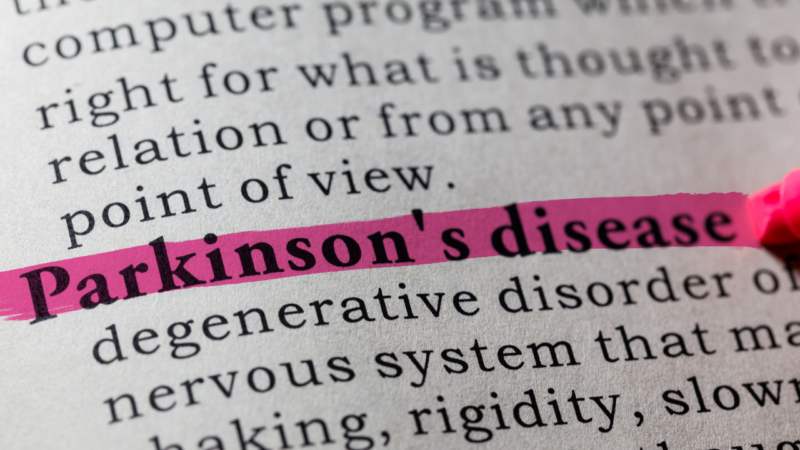Parkinson’s disease is a progressive, degenerative neurological condition; in Australia, it affects 100,000 people, with 38 people being diagnosed every day.
The disease is caused by cell damage that results in a loss of dopamine; a key chemical that helps the body communicate with the brain.
Parkinson’s disease is highly individual, with symptoms varying from person to person. After a diagnosis, patients, and caregivers alike, can get caught up in thinking about what the future holds and can miss simple changes to the home and daily activities that can make the world of difference.
‘Home’ is our safe place, where we have a sense of belonging and feel secure. However, as Parkinson’s disease progresses, the home environment can start to become more of an obstacle than a refuge.
There are several changes you can make to help improve your daily routine whilst living with Parkinson’s disease.

Break ‘automatic’ actions into smaller parts
Parkinson’s disease affects the ‘automatic’ part of the brain so activities that were once easily performed without thinking, now require the individual to stop and think of each step. One strategy to help with this is to write down simple prompts for tasks and stick them on the wall.
An example of this is the task of getting out of bed.
- Wriggle to side of bed
- Roll onto your side
- Bend both legs
- Bring feet over side of bed
- Push up into sitting
Stick these prompts on the bedside table so the individual can read each step separately.
Prompts throughout the room
Festination, a ‘shuffling’ at the beginning of walking, can be a significant cause of immobility and increases the risk of falls. One way to ‘trick’ the brain in overcoming the festination is to provide prompts that the brain can respond to. An example of these prompts could be:
- Playing music with a clear beat that the individual can step to with each beat
- Caregiver clearly saying ‘step, step, step’ at the initiation of walking
- Having a marker on the wheels of a walker that the client knows to step to
- Lines of tape on the ground (each a step length distance apart) from common areas in the house (e.g. in front of recliner, beside bed, in front of toilet)
- Rock from side to side to build momentum before taking a step
Remove clutter
Going through tight spaces such as door frames and clutter requires us to make slight adjustments to our walking pattern. Unfortunately, Parkinson’s disease can make this very tricky, and people can stop in their tracks when they reach a door frame or a confined space.
Look around your home and find any areas that are tight.
- Reposition chairs so you can stand up and walk straight instead of needing to turn
- Keep double doors open to create a larger space
- Push bookshelves or cupboards as far away from doorways are possible
- Remove baskets, throws, pillows that are kept at a low height
Remove tripping hazards
Falls can be a huge concern for those living with Parkinson’s disease as they can cause significant injury and result in reduced mobility and quality of life.
One simple way to help is to remove tripping hazards like rugs, slippery tiles in wet areas and steps. Keep the walking surface a consistent level allows you to focus on the effort of walking and not the need to constantly adjust for different terrains.
Consider engaging an occupational therapist or physiotherapist to review the home to identify any additional falls prevention measures that may be useful. If there are multiple stairs the individual is climbing with difficulty, look to see if there is an alternative to the steps, like entering via the backyard or installing a ramp
Higher chair
Rest is very important to allow the body to recover and work optimally when needed.
It’s important to invest in a comfortable chair where you can elevate your legs, allows your mind to relax and ensure you can safely stand when you are ready to tackle the day again.
Look at purchasing a higher seat with armrests so it’s easier to stand, or a recliner that can elevate when you are having an extra tired day.
Improve lighting
Finally, having good lighting within the house makes it significantly easier to navigate each room and helps avoid unnecessary bumps and stumbles. If you can, install movement sensor lights so it’s one less thing to think about when walking through the home at night.
Remember, ‘Rome wasn’t built in a day’. Slowly introduce strategies separately. It may take some time to see improvements, but with disease progression it becomes even more important to have these simple strategies in place.
FURTHER READING – Life with Parkinson’s: how physiotherapy can help
Article written by Madeleine Wrigley
REFERENCES:
- https://parkinsonsnewstoday.com/2018/02/19/7-ways-make-home-safer-living-parkinsons/
- https://shakeitup.org.au/
- https://www.sciencedirect.com/science/article/abs/pii/S1353802015003648



 1300 797 793
1300 797 793